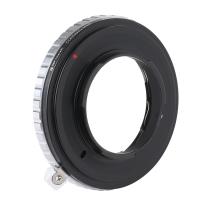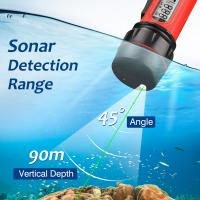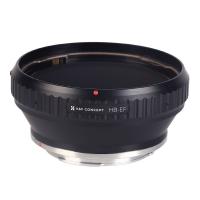How Does A Light Microscope Work A Level ?
A light microscope works by using visible light to illuminate a specimen and magnify it for observation. The light source, usually a bulb, emits light that passes through a condenser lens, which focuses the light onto the specimen. The light then passes through the objective lens, which further magnifies the image. The magnified image is then projected into the eyepiece, where it is viewed by the observer.
The objective lens and the eyepiece lens work together to provide the total magnification of the microscope. The magnification power of the objective lens is usually printed on it, and the eyepiece lens typically provides additional magnification. By adjusting the focus knobs, the observer can bring the specimen into sharp focus.
Light microscopes can have different types of illumination, such as brightfield, darkfield, phase contrast, or fluorescence, depending on the specific requirements of the observation. Additionally, some microscopes may have additional features like a mechanical stage for precise specimen movement or a camera attachment for capturing images.
1、 Optical principles of light microscopy
A light microscope, also known as an optical microscope, works on the principles of optics to magnify and visualize small objects that are not visible to the naked eye. It utilizes visible light and a combination of lenses to produce an enlarged image of the specimen.
The basic working principle of a light microscope involves the passage of light through the specimen and a series of lenses that focus and magnify the image. The light source, typically a bulb, emits light that passes through a condenser lens, which focuses the light onto the specimen. The light then passes through the objective lens, which further magnifies the image, and finally through the eyepiece lens, which allows the viewer to observe the magnified image.
The magnification power of a light microscope is determined by the combination of the objective lens and the eyepiece lens. The objective lens is responsible for the primary magnification, typically ranging from 4x to 100x, while the eyepiece lens further magnifies the image, usually by 10x. This results in a total magnification of 40x to 1000x, depending on the combination of lenses used.
In recent years, advancements in light microscopy have led to the development of techniques such as confocal microscopy, which allows for the visualization of three-dimensional structures within a specimen. Additionally, the use of fluorescent dyes and markers has enabled the visualization of specific molecules or structures within cells, providing valuable insights into cellular processes.
Overall, the optical principles of light microscopy have remained relatively unchanged, but technological advancements have enhanced the capabilities and applications of this essential tool in scientific research and medical diagnostics.

2、 Components and functions of a light microscope
Components and functions of a light microscope:
A light microscope, also known as an optical microscope, is a widely used tool in scientific research and education. It allows scientists to observe and study microscopic organisms and structures that are not visible to the naked eye. The basic components of a light microscope include an objective lens, an eyepiece, a light source, and a stage.
The objective lens is the primary lens of the microscope and is responsible for magnifying the specimen. It is usually made up of multiple lenses that work together to provide high-resolution images. The eyepiece, or ocular lens, further magnifies the image produced by the objective lens and allows the viewer to observe the specimen.
The light source, typically located at the base of the microscope, provides illumination for the specimen. In most modern microscopes, this is achieved using a halogen or LED light source. The light passes through the specimen and is then focused by the objective lens, creating a magnified image.
The stage is the platform on which the specimen is placed for observation. It can be moved vertically and horizontally to position the specimen under the objective lens. Some microscopes also have mechanical stages that allow for precise movement and control.
In addition to these basic components, light microscopes may also have additional features such as condensers, filters, and diaphragms. These components help control the amount and direction of light that reaches the specimen, improving image quality and contrast.
The latest advancements in light microscopy include the development of confocal microscopy and super-resolution microscopy techniques. Confocal microscopy uses a laser to scan the specimen point by point, creating a three-dimensional image with high resolution and optical sectioning capabilities. Super-resolution microscopy techniques, such as stimulated emission depletion (STED) microscopy and structured illumination microscopy (SIM), allow for imaging beyond the diffraction limit, enabling the visualization of structures at the nanoscale.
Overall, the light microscope works by using lenses to magnify and focus light, allowing scientists to observe and study microscopic specimens. Its versatility and accessibility make it an essential tool in various scientific disciplines.

3、 Magnification and resolution in light microscopy
A light microscope works by using visible light to magnify and resolve the details of a specimen. It consists of several key components, including a light source, lenses, and an eyepiece or camera for observation.
The light source, typically a bulb or LED, emits light that passes through a condenser lens. This lens focuses the light onto the specimen, which is placed on a glass slide. The light then passes through the objective lens, which is responsible for magnifying the specimen. The objective lens can be adjusted to change the magnification level.
After passing through the objective lens, the light enters the eyepiece or camera, where it is further magnified for observation. The eyepiece lens allows the viewer to see the magnified image directly, while a camera can capture the image for further analysis or documentation.
Magnification in light microscopy refers to the increase in size of the specimen. The total magnification is determined by multiplying the magnification of the objective lens by the magnification of the eyepiece lens or camera. For example, if the objective lens has a magnification of 40x and the eyepiece lens has a magnification of 10x, the total magnification would be 400x.
Resolution, on the other hand, refers to the ability to distinguish between two closely spaced objects. It is determined by the numerical aperture of the objective lens and the wavelength of light used. The numerical aperture is a measure of the lens' ability to gather light and resolve fine details. The shorter the wavelength of light used, the higher the resolution.
In recent years, advancements in light microscopy have led to improved resolution and imaging capabilities. Techniques such as confocal microscopy, which uses laser scanning to eliminate out-of-focus light, and super-resolution microscopy, which surpasses the diffraction limit of light, have revolutionized the field. These techniques have allowed scientists to observe cellular structures and processes at unprecedented levels of detail.
In conclusion, a light microscope works by using visible light to magnify and resolve the details of a specimen. Magnification is achieved through the use of objective and eyepiece lenses, while resolution is determined by the numerical aperture and wavelength of light. Recent advancements in light microscopy have greatly enhanced our ability to study and understand the microscopic world.

4、 Sample preparation techniques for light microscopy
A light microscope is an essential tool in the field of biology and is used to observe and study small biological samples. It works by using visible light to illuminate the sample and magnify the image for observation. The basic principle behind the functioning of a light microscope is the interaction of light with the sample.
To begin with, the sample preparation techniques for light microscopy involve several steps. The first step is fixation, where the sample is treated with chemicals to preserve its structure and prevent decay. This is followed by dehydration, where water is removed from the sample and replaced with a medium that is compatible with the microscope. The next step is embedding, where the sample is embedded in a solid medium to provide support and stability. Finally, the sample is sliced into thin sections using a microtome, allowing for better visualization under the microscope.
Once the sample is prepared, it is placed on a glass slide and covered with a coverslip. The slide is then placed on the stage of the microscope, and light is directed through the sample using a condenser lens. The light passes through the sample and is focused by the objective lens, which magnifies the image. The magnified image is then further enlarged by the eyepiece lens, allowing the observer to see the details of the sample.
In recent years, advancements in light microscopy have led to the development of techniques such as confocal microscopy and super-resolution microscopy. Confocal microscopy uses a laser to scan the sample and create a three-dimensional image, while super-resolution microscopy allows for the visualization of structures that were previously beyond the resolution limit of light microscopy. These techniques have revolutionized the field of biology by providing researchers with a higher level of detail and precision in their observations.
In conclusion, a light microscope works by using visible light to illuminate and magnify a prepared biological sample. Sample preparation techniques involve fixation, dehydration, embedding, and sectioning. Recent advancements in light microscopy have further enhanced the capabilities of this technique, allowing for more detailed and precise observations.









































